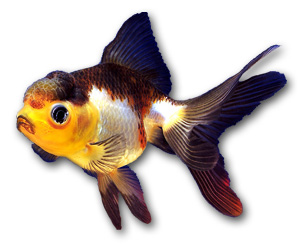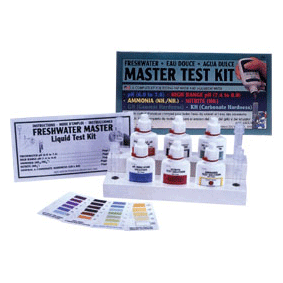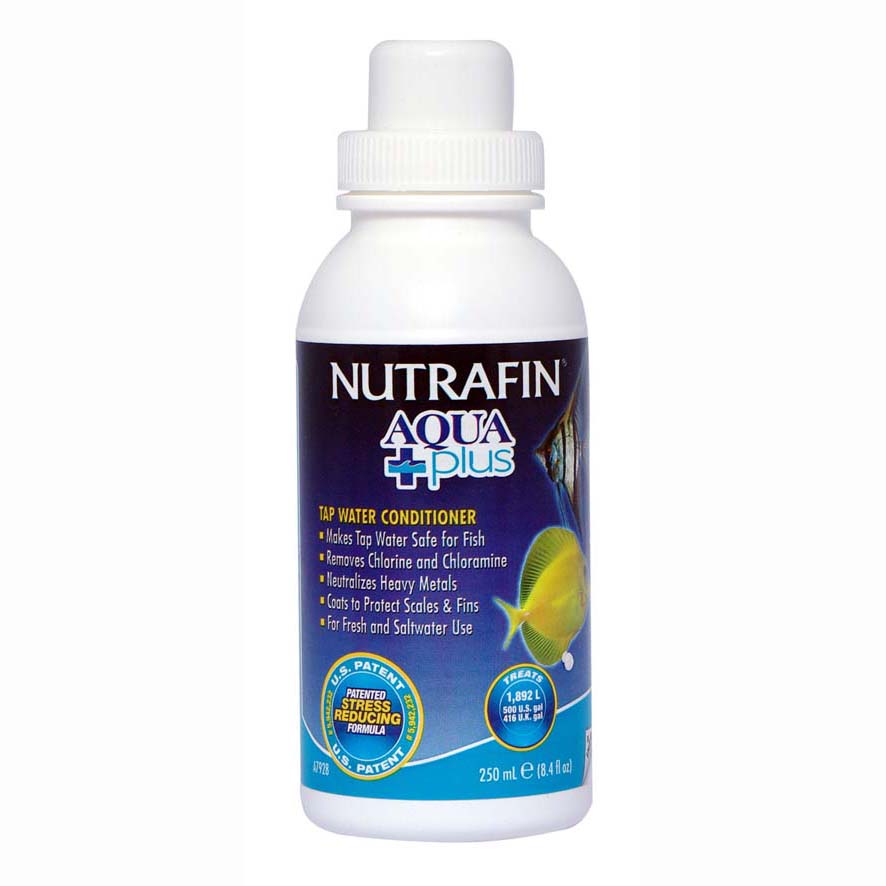Water Quality

Water quality is the single most important aspect to consider when keeping fish. Fish produce waste and there is nothing you can do to stop them. Without the proper "beneficial bacteria" present in your tank, this waste material can build up to toxic levels, which in turn will poison your fish. It can take up to six weeks for this bacteria to colonize your filter and gravel. During this time, it is not recommended that you add any fish to the tank.
The Fishless Cycle
When you set up an aquarium for the first time, you need to factor in that you can't stock it with fish straight away. You need to let the tank go through its maturation or "cycle" process before you add your first fish. This is done by adding a little fish food to your tank every few days. The decomposing food will encourage the beneficial bacteria to grow and multiply. This stage can take anywhere up to six weeks to complete, but will ensure that when you introduce your fish to the tank, it will be to a healthy environment.
During the six weeks, you should carry out weekly water changes of about 25 percent. It is also important that you purchase a fresh water test kit that tests for the presence of Ammonia, Nitrate and Nitrite, as well as pH. This will help in determining when the cycle is nearing it end.

As the cycle nears its conclusion, your ammonia levels should drop to zero, while your nitrate and nitrite levels elevate. Your nitrate levels will then start to drop as your nitrite levels elevate. Finally, when your nitrite levels drop and all tests are reading zero, the cycle process is over and it is safe to add fish.
The Fish In Cycle
This process will take the same length of time as the fishless cycle, but you will be using fish to produce waste and therefore ammonia to start the cycle. You can't just go ahead and add any old type of fish. It is best to go for species that will tolerate high levels of toxins in the water. Fish like Zebra Danios and Corydoras Catfish are ideal candidates. You proceed the same as if you are doing a fishless cycle. Testing the water regularly and carrying out partial water changes.
Borrowing Filter Media
Another way to speed up the process is to add gravel or a filter from an already established tank. If you know someone who already has a tank up and running for a while, they may be willing to give you a handful of gravel or loan you a sponge out of their filter. You could also buy your filter in advance of buying you tank and run the filter opposite the filter in your friends tank for a few weeks. This will allow the bacteria from your friends filter to colonize your filter. Just ensure that when you are transporting your filter back home to install in your own tank that you transport it in some of the water from your friends tank, as the bacteria will die otherwise.
Instant Bacteria Products
 There are many products on the market that claim to contain the bacteria needed for you tank. Unfortunately most of these products are only gimics. Two products that do work to some degree are Cycle and Bio-Spira. Unfortunately Bio-Spira is not available in Ireland or the UK as importation laws prohibit the shipment of certain bacteria for obvious reasons. Cycle, however is available. I would advise that you use these products in conjunction with any of the above cycling methods.
There are many products on the market that claim to contain the bacteria needed for you tank. Unfortunately most of these products are only gimics. Two products that do work to some degree are Cycle and Bio-Spira. Unfortunately Bio-Spira is not available in Ireland or the UK as importation laws prohibit the shipment of certain bacteria for obvious reasons. Cycle, however is available. I would advise that you use these products in conjunction with any of the above cycling methods.
Chlorine
Unless you are lucky enough to have your water supplied by a well, you will have to treat your water to remove  the chlorine from it. Chlorine is added to drinking water in almost all water schemes, be they public or private water schemes. Chlorine is added to your tap water to stop bacteria from developing and causing illnesses. Unfortunately, chlorine will also kill the bacteria in your tank. Fortunately, there are tap water conditioners available, that neutralize chlorine. Any good pet shop should supply this product.
De-chlorinator should be added to your water BEFORE you add the water to your aquarium. The best way to ensure that all chlorine is gone from your water is to prepare the water in buckets the night before you plan to do your water change. This also allows the water to reach room temperature overnight and therefore will cause less stress to your fish.
the chlorine from it. Chlorine is added to drinking water in almost all water schemes, be they public or private water schemes. Chlorine is added to your tap water to stop bacteria from developing and causing illnesses. Unfortunately, chlorine will also kill the bacteria in your tank. Fortunately, there are tap water conditioners available, that neutralize chlorine. Any good pet shop should supply this product.
De-chlorinator should be added to your water BEFORE you add the water to your aquarium. The best way to ensure that all chlorine is gone from your water is to prepare the water in buckets the night before you plan to do your water change. This also allows the water to reach room temperature overnight and therefore will cause less stress to your fish.
Water Changes
An essential part to keeping a healthy aquarium is to carry out partial weekly water changes of up to fifty percent. NEVER COMPLETELY EMPTY YOUR TANK. Ignore petshops that tell you to change the water once a month. By removing your fish from the tank, you stress them and make them more susceptible to illness. Your fish's only defence against bacterial attack is its slime coat, which covers their entire body. When you stress your fish, they lose their slime coat and are open to attack. You can safely do a 50 percent water change and leave your fish in the tank. It is also advisable that you add Stress Coat after you do a water change. This will help keep your fish's slime coat intact and therefore keep your fish healthy. You should also add some Cycle or Bio-Spira to your tank after you have topped it up with fresh water.
Gravel Vacuum
The age old way of cleaning the  gravel in your aquarium, was to remove the gravel and wash it. This is not a good idea. Firstly, you will have to empty the tank to remove the gravel and therefore also remove the fish. As explained above, this is not the way to go. By removing the gravel and washing it, you are killing the beneficial bacteria that is present in it. The best way to clean the gravel is to buy a gravel vacuum. These are inexpensive and also are perfect for carrying out water changes. The gravel vacuum will remove any debris and decomposing food from your gravel, while doing a water change. A gravel vacuum is a must for any fish keeper.
gravel in your aquarium, was to remove the gravel and wash it. This is not a good idea. Firstly, you will have to empty the tank to remove the gravel and therefore also remove the fish. As explained above, this is not the way to go. By removing the gravel and washing it, you are killing the beneficial bacteria that is present in it. The best way to clean the gravel is to buy a gravel vacuum. These are inexpensive and also are perfect for carrying out water changes. The gravel vacuum will remove any debris and decomposing food from your gravel, while doing a water change. A gravel vacuum is a must for any fish keeper.
Filter Cleaning and Maintenance.
The general consensus among people new to the hobby of fish keeping is that you dont have to do water changes because you have a filter. This of course is not true. Partial water changes are part and parcel of the hobby as is filter cleaning and maintenance.
Once a month, while doing a partial water change, you should also remove your filter to clean it. Carry out your water change first and then un plug your filter. Remove the sponges from the filter and wash them in the water you are after taking out of the tank. Never wash your filter sponges with tap water as the chlorine will kill the bacteria housed in the filter media. Lightly wash the sponges, removing the heavy material. Repeatedly squeezing and scrubbing the sponges will force the bacteria out of the sponge and in to the water. You want to avoid this. Just remove the heavy material.
At this time you can also check the filter pump head to ensure that it is not clogged and is in working order. Replace the filter media and put the filter back in the tank. Another common misconception is that you dont need to run your filter all the time or that you only turn it on after feeding your fish. Your filter needs to be running twenty four hours a day, seven days a week. Fish don't just produce waste after they eat.
Cleaner Fish
If you have planned your tank properly, you will have included cleaner fish among the species that you house in your aquarium. The first fish that you should include is some form of algae eater. There are numerous species available for both tropical and cold water tanks. Algae is a fact of life for any aquarist, but a Plecostomus is a cheap and effective way to keep algae at bay. They will eat the algae from all the surfaces of your tank including the glass, ornaments and stones.
You should also consider adding some form of catfish, such as a Corydoras Catfish. The Corydoras will patrol the entire bottom of the tank looking for uneaten food that has fallen to the gravel. These guys are invaluable at keeping your gravel clean. They will also minimize the amount of gravel vacuuming that you have to do during water changes.